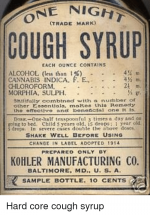You are using an out of date browser. It may not display this or other websites correctly.
You should upgrade or use an alternative browser.
You should upgrade or use an alternative browser.
- Thread starter Daniel E.
- Start date
More threads by Daniel E.
Another great Halloween treat!
That's even colder than an Ottawa winter.
https://www.cbsnews.com/pictures/outrageous-vintage-cigarette-ads/3/
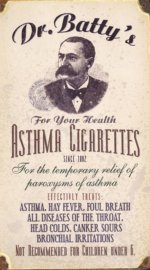
This 1890 ad for Dr. Batty's Asthma Cigarettes warns against administering them to your kids unless they are at least six years old.
Credit: Stanford School of Medicine

This 1890 ad for Dr. Batty's Asthma Cigarettes warns against administering them to your kids unless they are at least six years old.
Credit: Stanford School of Medicine
David Baxter PhD
Late Founder
David Baxter PhD
Late Founder
https://www.cbsnews.com/pictures/outrageous-vintage-cigarette-ads/3/
This 1890 ad for Dr. Batty's Asthma Cigarettes warns against administering them to your kids unless they are at least six years old.
Credit: Stanford School of Medicine
Another great Halloween treat!
Great idea, especially since they are sugar free 

https://getpocket.com/explore/item/i-asked-leading-entomologists-what-s-the-smartest-bug-in-the-world
The easiest way to understand an insect’s nervous system is that an insect has many different sub-brains in different parts of its body, which feed into and can be controlled by a slightly larger central brain but can actually also operate separately. The antennae of an insect has its own brain. So does the mouth, the eyes, and each leg. Even if the central brain of an insect stops working, its legs still have their own sub-brains, and can keep walking.
The easiest way to understand an insect’s nervous system is that an insect has many different sub-brains in different parts of its body, which feed into and can be controlled by a slightly larger central brain but can actually also operate separately. The antennae of an insect has its own brain. So does the mouth, the eyes, and each leg. Even if the central brain of an insect stops working, its legs still have their own sub-brains, and can keep walking.
Can we drink the Moon water? Scientists explain
On Monday, NASA scientists announced they had detected molecular water on the Moon, trapped in ice across the lunar surface. From the data, they estimate there is some 40,000 square kilometers (more than 24,000 miles) of water on the Moon...
The Sun never shines on the Moon's poles, and temperatures there can dip to -250 degrees Fahrenheit. These are extreme environments and not very easily accessible.
The new papers reveal that the water sources on the Moon may not just be confined to frigid poles. Rather, the water appears scattered throughout the lunar surface in billions of tiny "cold traps," according to one of the papers released Monday.
One cubic meter of lunar soil likely has enough water to fill a 12-ounce water bottle, Casey Honniball, a postdoctoral researcher at NASA, said at a press conference on Monday.
If we can mine it and purify it, it is quite possible that bottles of Moon water will one day quench the thirst of lunar inhabitants.
On Monday, NASA scientists announced they had detected molecular water on the Moon, trapped in ice across the lunar surface. From the data, they estimate there is some 40,000 square kilometers (more than 24,000 miles) of water on the Moon...
The Sun never shines on the Moon's poles, and temperatures there can dip to -250 degrees Fahrenheit. These are extreme environments and not very easily accessible.
The new papers reveal that the water sources on the Moon may not just be confined to frigid poles. Rather, the water appears scattered throughout the lunar surface in billions of tiny "cold traps," according to one of the papers released Monday.
One cubic meter of lunar soil likely has enough water to fill a 12-ounce water bottle, Casey Honniball, a postdoctoral researcher at NASA, said at a press conference on Monday.
If we can mine it and purify it, it is quite possible that bottles of Moon water will one day quench the thirst of lunar inhabitants.
David Baxter PhD
Late Founder
The Sun never shines on the Moon's poles, and temperatures there can dip to -250 degrees Fahrenheit. These are extreme environments and not very easily accessible.
That's even colder than an Ottawa winter.

But it feels warmer than -250F without the Canadian wind chill 
David Baxter PhD
Late Founder
That's true.
We've have arctic air flow coming to Ontario later this week, probably by Sunday if not before...
We've have arctic air flow coming to Ontario later this week, probably by Sunday if not before...

Fast-food menu items you will never be able to order again - Business Insider
Burger King's heavily-hyped hot dogs quietly disappeared from the menu.
When Burger King rolled out grilled hot dogs in 2016, the chain promised they would be a permanent menu item — despite immediate backlash against the addition.
Burger King's heavily-hyped hot dogs quietly disappeared from the menu.
When Burger King rolled out grilled hot dogs in 2016, the chain promised they would be a permanent menu item — despite immediate backlash against the addition.
Discussed on a morning show today:
During the 1918 Pandemic, 'Mask Slackers' Were Labeled as Unpatriotic - HISTORY
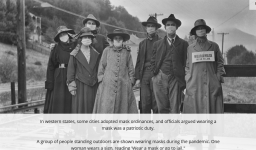
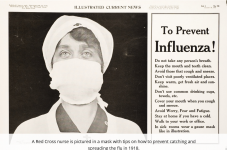
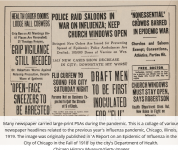
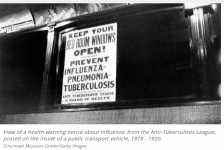
Many of the methods Americans used in 1918 to try to prevent the spread of the flu are similar to what people began doing during the COVID-19 pandemic: Close schools. Wear masks. Don't cough or sneeze in someone's face. Avoid large events and hold them outside when possible. And no spitting.
Health and city officials got the word out about these guidelines in all kinds of ways. In Philadelphia, streetcar signs warned "Spit Spreads Death." In New York City, officials enforced no-spitting ordinances and encouraged residents to cough or sneeze into handkerchiefs (a practice that caught on after the pandemic). The city's health department even advised people not to kiss "except through a handkerchief," and wire reports spread the message around the country.
In western states, some cities [including Phoenix] adopted mask ordinances, and officials argued wearing one was a patriotic duty. In October 1918, the San Francisco Chronicle ran a public service announcement telling readers that "The man or woman or child who will not wear a mask now is a dangerous slacker"--a reference to the type of World War I "slacker" who didn't help the war effort. One sign in California threatened, "Wear a Mask or Go to Jail."
Wear a Mask and Save Your Life!’
The PSA in the Chronicle appeared on October 22, just over a week before San Francisco had scheduled its mask ordinance to begin on November 1. It was signed by the mayor, the city’s board of health, the American Red Cross and several other departments and organizations, and it was very clear about its message: “Wear a Mask and Save Your Life!”
For the most part, San Franciscans listened.
“Red Cross headquarters in San Francisco made 5,000 masks available to the public at 11:00 A.M., October 22. By noon it had none,” wrote the late historian Alfred W. Crosby in America's Forgotten Pandemic: The Influenza of 1918. “By noon the next day Red Cross headquarters had dispensed 40,000 masks. By the twenty-sixth 100,000 had been distributed in the city… In addition, San Franciscans were making thousands for themselves.”
Full article
During the 1918 Pandemic, 'Mask Slackers' Were Labeled as Unpatriotic - HISTORY




Many of the methods Americans used in 1918 to try to prevent the spread of the flu are similar to what people began doing during the COVID-19 pandemic: Close schools. Wear masks. Don't cough or sneeze in someone's face. Avoid large events and hold them outside when possible. And no spitting.
Health and city officials got the word out about these guidelines in all kinds of ways. In Philadelphia, streetcar signs warned "Spit Spreads Death." In New York City, officials enforced no-spitting ordinances and encouraged residents to cough or sneeze into handkerchiefs (a practice that caught on after the pandemic). The city's health department even advised people not to kiss "except through a handkerchief," and wire reports spread the message around the country.
In western states, some cities [including Phoenix] adopted mask ordinances, and officials argued wearing one was a patriotic duty. In October 1918, the San Francisco Chronicle ran a public service announcement telling readers that "The man or woman or child who will not wear a mask now is a dangerous slacker"--a reference to the type of World War I "slacker" who didn't help the war effort. One sign in California threatened, "Wear a Mask or Go to Jail."
Wear a Mask and Save Your Life!’
The PSA in the Chronicle appeared on October 22, just over a week before San Francisco had scheduled its mask ordinance to begin on November 1. It was signed by the mayor, the city’s board of health, the American Red Cross and several other departments and organizations, and it was very clear about its message: “Wear a Mask and Save Your Life!”
For the most part, San Franciscans listened.
“Red Cross headquarters in San Francisco made 5,000 masks available to the public at 11:00 A.M., October 22. By noon it had none,” wrote the late historian Alfred W. Crosby in America's Forgotten Pandemic: The Influenza of 1918. “By noon the next day Red Cross headquarters had dispensed 40,000 masks. By the twenty-sixth 100,000 had been distributed in the city… In addition, San Franciscans were making thousands for themselves.”
Full article
Last edited:
AAFA Explains: Will Coffee or Caffeinated Drinks Help My Asthma? | Asthma and Allergy Foundation of America
Clinical studies have shown that caffeine is a weak bronchodilator, improving lung function for two to four hours after it is consumed. However, it is not as strong or fast acting as rescue bronchodilators like albuterol. This would make it unsafe to use caffeine as an asthma treatment.
Sent from my LM-Q720 using Tapatalk
Clinical studies have shown that caffeine is a weak bronchodilator, improving lung function for two to four hours after it is consumed. However, it is not as strong or fast acting as rescue bronchodilators like albuterol. This would make it unsafe to use caffeine as an asthma treatment.
Sent from my LM-Q720 using Tapatalk
David Baxter PhD
Late Founder
‘Baby Shark’ Is The Most-Viewed YouTube Video Of All Time
by Rachel Sandler, Forbes.com
Nov 2, 2020
After becoming an unexpected smash hit in 2018, the insanely catchy children’s tune Baby Shark on Monday became the most-viewed video on YouTube.
Baby Shark has now garnered 7.04 billion views, beating out Luis Fonsi and Daddy Yankee’s global hit Despacito1.
Though it was originally uploaded in 2016, the song surged in popularity in 2018, becoming nearly inescapable for families and the bane of parents everywhere.
At its height in January 2019, the song peaked at No. 32 on the Billboard Hot 100 and even spawned a live concert for kids, Baby Shark Live!
The viral hit’s popularity is somewhat of a mystery, but the video’s easy dance moves, cute characters and catchy lyrics made for a particularly wholesome social media challenge, #BabySharkChallenge, which first went viral in Asia and then spread to the rest of the world.
Crucial Quote
"Without the love and support of fans around the world, Baby Shark's new record would have been impossible," SmartStudy CEO Min Seok Kim said in a statement. "We're very honored by this record and will continue to focus on delivering high-quality entertainment beyond the digital platforms."
Baby Shark was recorded by South Korean education company Pinkfong, a subsidiary of South Korean giant SmartStudy. No one knows who originally wrote the lyrics, but it originated as a popular summer camp campfire chant that is now believed to be in the public domain.
1 Despacito
by Rachel Sandler, Forbes.com
Nov 2, 2020
After becoming an unexpected smash hit in 2018, the insanely catchy children’s tune Baby Shark on Monday became the most-viewed video on YouTube.
Baby Shark has now garnered 7.04 billion views, beating out Luis Fonsi and Daddy Yankee’s global hit Despacito1.
Though it was originally uploaded in 2016, the song surged in popularity in 2018, becoming nearly inescapable for families and the bane of parents everywhere.
At its height in January 2019, the song peaked at No. 32 on the Billboard Hot 100 and even spawned a live concert for kids, Baby Shark Live!
The viral hit’s popularity is somewhat of a mystery, but the video’s easy dance moves, cute characters and catchy lyrics made for a particularly wholesome social media challenge, #BabySharkChallenge, which first went viral in Asia and then spread to the rest of the world.
Crucial Quote
"Without the love and support of fans around the world, Baby Shark's new record would have been impossible," SmartStudy CEO Min Seok Kim said in a statement. "We're very honored by this record and will continue to focus on delivering high-quality entertainment beyond the digital platforms."
Baby Shark was recorded by South Korean education company Pinkfong, a subsidiary of South Korean giant SmartStudy. No one knows who originally wrote the lyrics, but it originated as a popular summer camp campfire chant that is now believed to be in the public domain.
1 Despacito
IBMs Watson: How the A.I. project to improve cancer treatment went wrong.
In the 1960s...IBM spent about 11.5 times its annual earnings to develop its mainframe computer, a line of business that still accounts for much of its profitability today.
If it were to make an equivalent investment in Watson, it would need to spend $137 billion. “The only thing it’s spent that much money on is stock buybacks.”
In the 1960s...IBM spent about 11.5 times its annual earnings to develop its mainframe computer, a line of business that still accounts for much of its profitability today.
If it were to make an equivalent investment in Watson, it would need to spend $137 billion. “The only thing it’s spent that much money on is stock buybacks.”
The Dismay of Buddhist Motherhood - Tricycle
Throughout most of human history, infant mortality has been so widespread that well into the 19th century, American parents didn’t name their children until they hit toddlerhood, when the chances for the kid’s survival began to increase.
Throughout most of human history, infant mortality has been so widespread that well into the 19th century, American parents didn’t name their children until they hit toddlerhood, when the chances for the kid’s survival began to increase.
David Baxter PhD
Late Founder
Sad.
Many Christians even name their still-born babies, partly out of respect and partly a throwback to days when they believed without a name a human being couldn't get into heaven.
Many Christians even name their still-born babies, partly out of respect and partly a throwback to days when they believed without a name a human being couldn't get into heaven.
Stephenson 2-18 - Wikipedia
Stephenson 2-18 (St2-18), also known as Stephenson 2 DFK 1 or RSGC2-18, is a red supergiant star in the constellation of Scutum. It lies near the open cluster Stephenson 2, which is located around 6,000 parsecs (20,000 ly) away from Earth...
It is among the largest known stars, if not the largest, and one of the most luminous red supergiants, with an estimated radius around 2,150 times that of the Sun, which corresponds to a volume around 10 billion times bigger than the Sun. If placed at the center of the Solar System, its photosphere would engulf the orbit of Saturn.
Stephenson 2-18 (St2-18), also known as Stephenson 2 DFK 1 or RSGC2-18, is a red supergiant star in the constellation of Scutum. It lies near the open cluster Stephenson 2, which is located around 6,000 parsecs (20,000 ly) away from Earth...
It is among the largest known stars, if not the largest, and one of the most luminous red supergiants, with an estimated radius around 2,150 times that of the Sun, which corresponds to a volume around 10 billion times bigger than the Sun. If placed at the center of the Solar System, its photosphere would engulf the orbit of Saturn.
HAL 9000 - Wikipedia
HAL 9000 is a fictional artificial intelligence character and the main antagonist in Arthur C. Clarke's Space Odyssey series. First appearing in the 1968 film 2001: A Space Odyssey, HAL (Heuristically Programmed ALgorithmic Computer) is a sentient computer (or artificial general intelligence) that controls the systems of the Discovery One spacecraft and interacts with the ship's astronaut crew...
In addition to maintaining the Discovery One spacecraft systems during the interplanetary mission to Jupiter (or Saturn in the novel), HAL is capable of speech, speech recognition, facial recognition, natural language processing, lip reading, art appreciation, interpreting emotional behaviours, automated reasoning, spacecraft piloting and playing chess.
HAL 9000 is a fictional artificial intelligence character and the main antagonist in Arthur C. Clarke's Space Odyssey series. First appearing in the 1968 film 2001: A Space Odyssey, HAL (Heuristically Programmed ALgorithmic Computer) is a sentient computer (or artificial general intelligence) that controls the systems of the Discovery One spacecraft and interacts with the ship's astronaut crew...
In addition to maintaining the Discovery One spacecraft systems during the interplanetary mission to Jupiter (or Saturn in the novel), HAL is capable of speech, speech recognition, facial recognition, natural language processing, lip reading, art appreciation, interpreting emotional behaviours, automated reasoning, spacecraft piloting and playing chess.
David Baxter PhD
Late Founder
“I’m sorry. I can’t read that, Dave. Dave? What are you doing Dave?”
Sent from my iPhone using Tapatalk
Sent from my iPhone using Tapatalk
Replying is not possible. This forum is only available as an archive.

